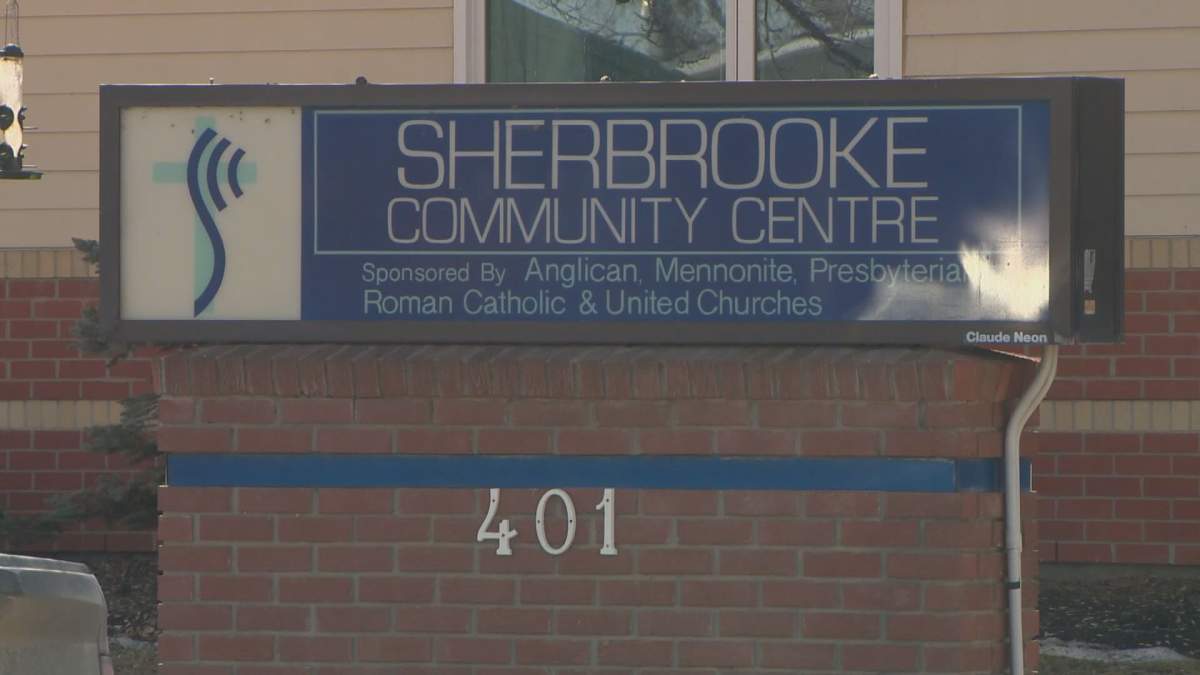A Saskatoon long-term care home was barely able to avoid an outbreak of COVID-19 after no other residents tested positive for the disease.

Someone living at the Sherbrooke Community Centre was diagnosed with the disease caused by the novel coronavirus on Dec. 26, triggering the facility’s outbreak protocols which includes testing everyone else in the unit.
“Lots of different emotions … you’re hoping to get through the whole pandemic without a resident testing positive but it happened. And what we’ve been doing since the middle of March is doing a lot of education, a lot of training with our staff in preparation for this moment. So you hope for the best, but you plan for the worst. And so when we got the news, we just started to go into all of our training,” spokesperson Eric Anderson said.
“Outbreaks are something that we know what to do with in terms of we do lots of training, lots of education with our staff … and so our staff are incredible and they know the proper infection control measures to do so it’s just a matter of doing it right now.”
On Tuesday, Anderson said all other residents had negative tests.
The Saskatchewan Health Authority (SHA) defines an outbreak to be when two or more people contract the disease.
“It was very much a relief,” Anderson told Global News, “because we know, and we’ve seen how quickly this virus can spread.”
He stressed staff remain “really determined to keep this under control,” though he said they aren’t testing everyone else in the complex.
Anderson said Sherbrooke uses a “village model” for some of its residents, where about 10 people live clustered together in a “house” but have their own rooms.
“Sherbrooke is a very unique long-term care home so we sort of have two different sides of the building. So on the one side … there’s 40 residents in more your traditional style snd we call them the neighbourhoods,” Anderson said.

Get weekly health news
“In the village model, there are 11 distinct houses and within each house there’s a full kitchen services. Residents, for the most part, have their own individual rooms with their own individual bathrooms as well and so the resident that tested positive lived in one of these houses.
“So what we did was when we received the result, we immediately tested the other residents within that house. So around nine or 10 residents we tested and luckily those residents tested negative.”
Anderson said staff placed everyone else in the house into isolation from each other and isolated the house from the rest of the facility.
“The village model allows us to … immediately isolate that specific house from the rest of the building. So what we’ve done is all those residents within that specific house are in isolation right now. And then we have isolated that specific house from the rest of the building,” Anderson said.
He also said staff have been working in cohorts since the start of the pandemic and that they were working with the SHA to determine the cause of the COVID-19 infection.
“And then something that we always do at Sherbrooke even before the pandemic, was we would cohort our staff. So as best as we could, we would have the same staff working in each specific house or neighbourhood. We did that because we believe that it provides a better level of care and it really develops those meaningful relationships between care staff and residents.
“So when we receive the positive test result, we really refocus to make sure that those staff working in that specific house would only work in that specific house, that they wouldn’t work anywhere else and so that was done in order to prevent any sort of spread.”
“We let our staff know on Saturday about this resident that tested positive and then the staff have been undergoing testing. So I know a fair bit of staff went to the drive-thru testing on Sunday to get tested. And then they’re just awaiting those results. And so far, we haven’t had any staff tested positive. So we’re very, very encouraged by that. That’s good news.”
He said staff were only testing those who had been in contact with the infected person.
“Throughout the building, if it’s not like we’re not doing any sort of mass testing or anything like that, if any residents show any symptoms at all really related to COVID, then immediately they’re isolated and they’re tested. And then … the residents are in isolation for a certain period of time,” Anderson said.
“We’re working closely with (SHA) officials and public health officials in terms of what those next steps are.”
-With files from Thomas Piller

Questions about COVID-19? Here are some things you need to know:
Symptoms can include fever, cough and difficulty breathing — very similar to a cold or flu. Some people can develop a more severe illness. People most at risk of this include older adults and people with severe chronic medical conditions like heart, lung or kidney disease. If you develop symptoms, contact public health authorities.
To prevent the virus from spreading, experts recommend frequent handwashing and coughing into your sleeve. They also recommend minimizing contact with others, staying home as much as possible and maintaining a distance of two metres from other people if you go out. In situations where you can’t keep a safe distance from others, public health officials recommend the use of a non-medical face mask or covering to prevent spreading the respiratory droplets that can carry the virus. In some provinces and municipalities across the country, masks or face coverings are now mandatory in indoor public spaces.
For full COVID-19 coverage from Global News, click here.







Comments